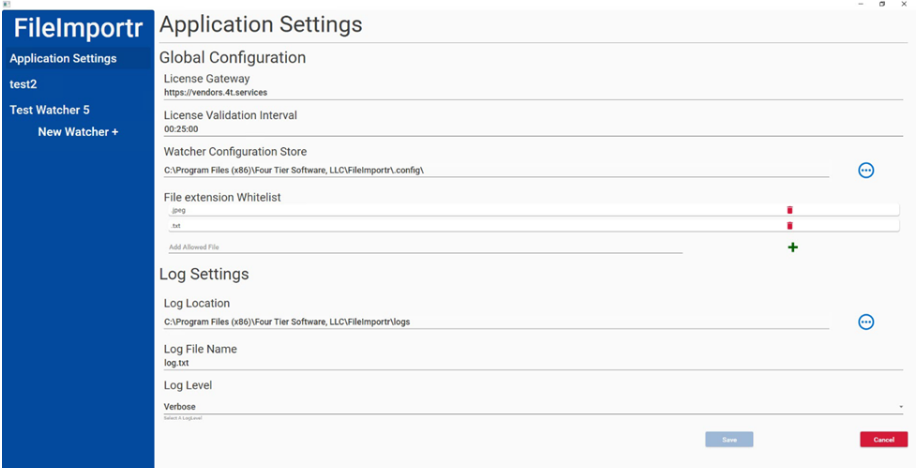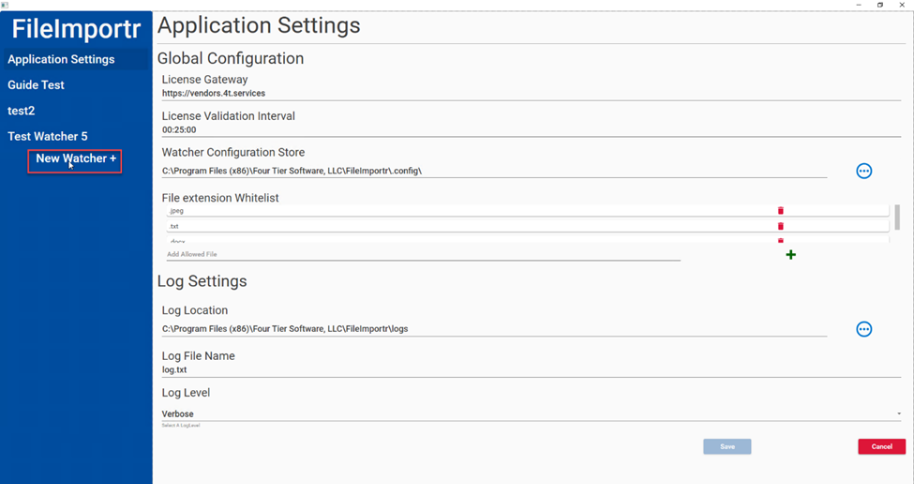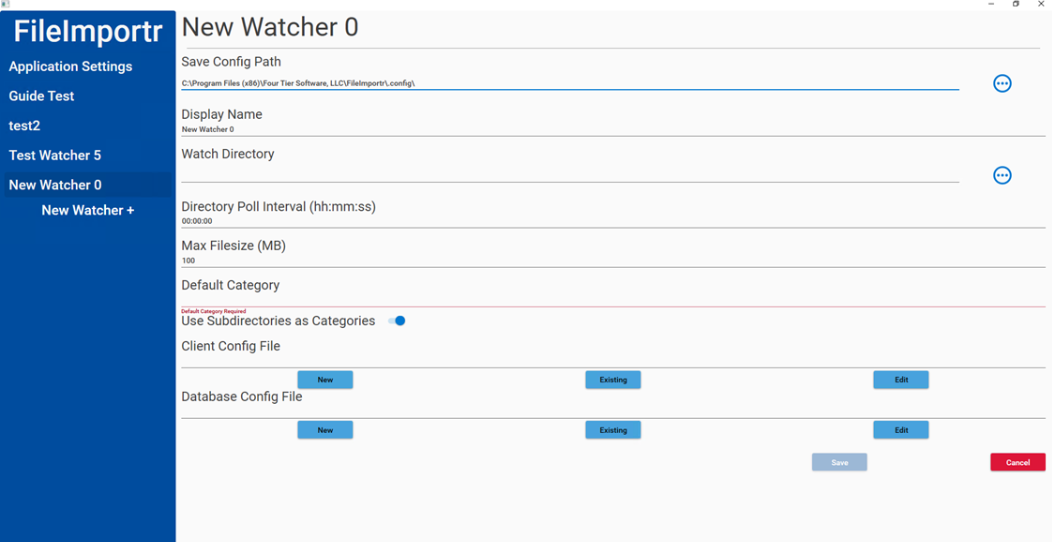Import to FileScan Admin Guide v1.0
Table of Contents

Import To FileScan v1.0
Admin Guide
Contact
- Import to FileScan will open in admin mode and display Application Settings:
- License Gateway will be pre-populated with the URL for the license.
- License Validation Interval determines how often the license is checked and can be altered to check more frequently or infrequently.
- Watcher Configuration Store is the path where the Watcher config files are stored. This can be set by using “…”in-line with the field.
- When changed, if any watcher config files exist in the in the newly selected location, they will be loaded and displayed in the left column.
- If the Application Settings are saved with the new location, when the Import to FileScan Windows service is restarted, it will load watchers from this new location and not load any watchers from the previous configuration store.
- If Print to File Scan is being used, you can point to any previous configuration files, they can be used interchangeably.
- File Extension Whitelist accepts various file types. Any desired file type can be added or removed using the “+” and trash can icon.
- Log Location is the path where logs will be written to. This can be set by using “…” in-line with the field.
- Log File Name is the name of the log file.
- Log Level determines the amount of detail in the logs, with Fatal only logging errors and Verbose logging everything, including the lower levels.

- Click New Watcher + to add a new watcher to the list.

- A new watcher creation screen will display:
- Save Config Path is where the config file for the new watcher will be saved.
- This can be changed by using “…” in-line with the field. The value of Save Config Path will initially be populated with the same value as Application Settings > Watcher Config File Store.
- If the Save Config Path is not in the Application Settings > Watcher Config File Store, or a sub directory of this location, the Import to FileScan Windows Service will not load the newly created watcher.
- Display Name is the name of the watcher and will be displayed on the left navigation of the admin screen, and will be prefixed to the configuration file.
- The Watch Directory determines where the watcher looks for folders to import and can be set by using “…” in-line with the field.
- Directory Poll Interval determines how often the folder is checked and can be altered to check more frequently or infrequently.
- The Max Filesize can be set from 1 MB to 100 MB. Any files over the allowed file size will not be accepted.
- The Default Category corresponds to categories configured in FileScan, and must be a valid category.
- Use Subdirectories as Categories is automatically checked. When enabled, Import to FileScan will use the names of subdirectories as the FileScan category when importing the contents of the subdirectory.
- Otherwise the configured default category will be used for all content in all sub directories. If a subdirectory name does not match a category, the default will be used.
- Client Config File provides license information the watcher will use when validating License information.
- New will allow the creation of a new client config file with a valid client ID and secret key.
- Existing allows the selection of an existing client config file used for PTFS.
- Edit will allow changes to be made to the client config display name, client ID and secret key.
- Database Config File specifies which database the watcher will connect to and how it makes the connection.
- New will allow the creation of a new database config file with a valid server name, database and authentication.
- Existing allows the selection of an existing database config file used for PTFS.
- Edit will allow changes to be made to the database config display name, log location, region ID and other database settings.
- Save will create/update the watcher with your entered settings.
- Cancel will reset to the prior/empty value.

- Save Config Path is where the config file for the new watcher will be saved.
- When a new watcher is added admins will need to restart FileImportr via services.